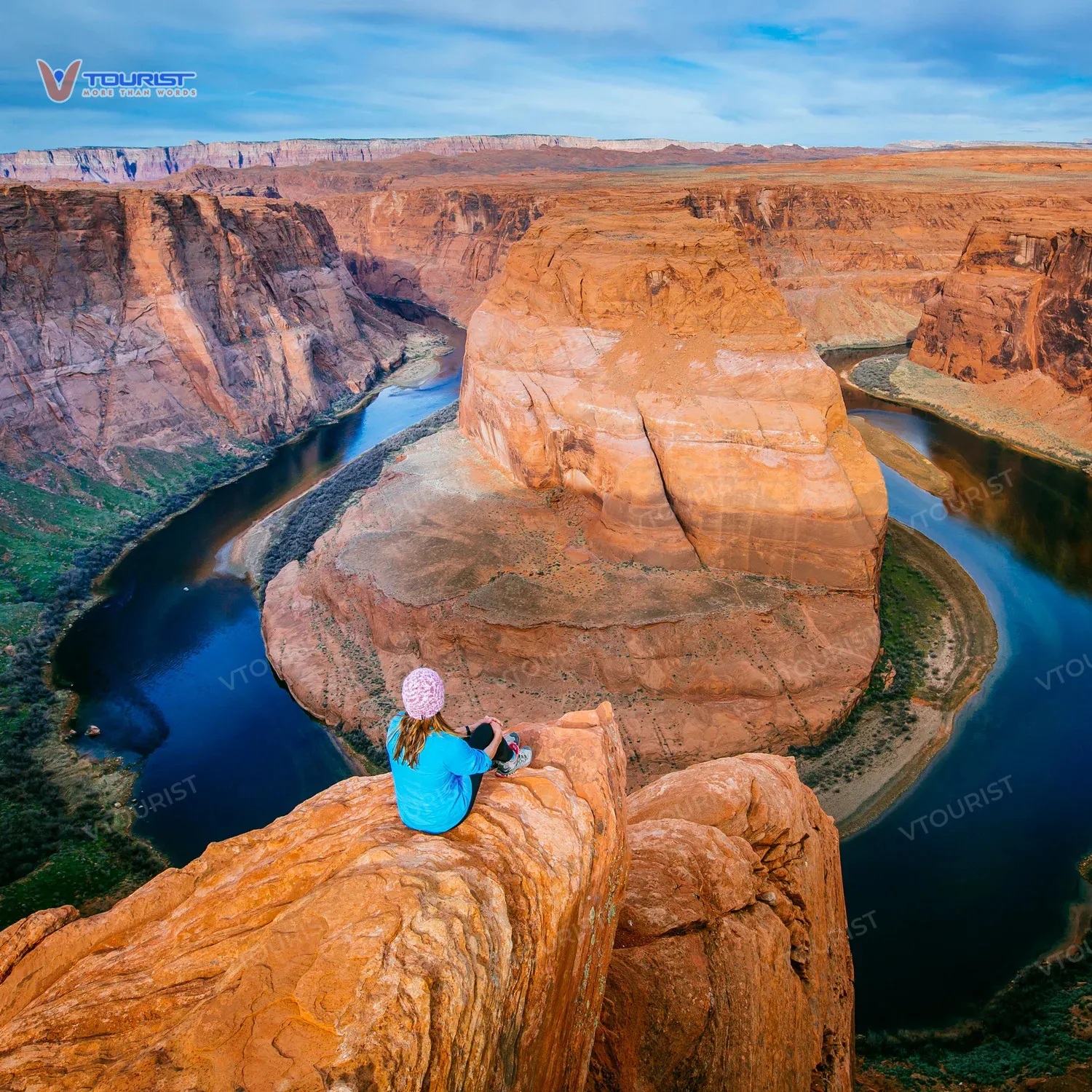Arizona, famous for its sprawling deserts, majestic canyons, and unique cultural heritage, is also home to a wealth of stunning natural reserves. This state serves as the perfect destination for adventure enthusiasts and nature lovers alike, offering breathtaking landscapes and untouched beauty. Let’s dive into the most beautiful natural reserves in Arizona, where you can immerse yourself in nature and experience unforgettable adventures.
1. Horseshoe Bend: A Stunning Natural Wonder on the Colorado River
Horseshoe Bend, also known as the Horseshoe Canyon, is one of the most iconic natural wonders in Arizona. Located near the city of Page, Horseshoe Bend is a breathtaking horseshoe-shaped curve carved by the Colorado River over millions of years. Standing more than 1,000 feet above the bend, you’ll be mesmerized by the panoramic views of the twisting river, striking red cliffs, and clear blue skies—a truly majestic sight.

This incredible geological feature was shaped by the erosion of the Colorado River, showcasing the intricate forces of nature over millions of years. The vibrant red rocks, rich in minerals like iron oxide, contrast beautifully with the river’s deep blue waters, creating a scene that’s absolutely captivating.
2. Grand Canyon: A Timeless World Wonder
No discussion about Arizona’s natural beauty would be complete without mentioning the Grand Canyon. Spanning over 277 miles in length, up to 18 miles in width, and plunging more than 6,000 feet deep, the Grand Canyon is one of the largest and deepest canyons in the world. Formed by the Colorado River’s steady erosion over millions of years, it presents a living geological masterpiece with multicolored rock formations and extraordinary landscapes.
Visitors to the Grand Canyon can enjoy hiking on its famed trails, admiring sweeping views from various observation points, or even embarking on thrilling rafting adventures along the Colorado River.
3. Antelope Canyon: A Mystical Slot Canyon with Stunning Light Beams
Antelope Canyon, nestled on Navajo land near Page, Arizona, is an extraordinary slot canyon known for its mesmerizing wave-like sandstone walls and enchanting light beams filtering through. It’s a dream destination for photographers and nature admirers alike.

Antelope Canyon offers two distinct sections: Upper Antelope Canyon and Lower Antelope Canyon, each with its own unique charm. The sunlight streaming through the narrow openings illuminates the canyon’s vibrant hues, creating surreal visual effects. Only a short 15-minute drive from Horseshoe Bend, this site is one of the most popular photography spots in Arizona, drawing visitors from across the globe.
4. Saguaro National Park: The Kingdom of Giant Cacti
Saguaro National Park, situated in southern Arizona, is renowned for its towering saguaro cacti, the iconic symbol of the Sonoran Desert. These remarkable cacti can reach heights of up to 60 feet and live for hundreds of years, dominating the park’s unique landscape with their striking presence.
Visitors can explore the park through scenic drives, hiking trails, or educational programs that delve into the desert’s diverse ecosystem and unique plant and animal life.
5. Petrified Forest National Park: A Kaleidoscope of Fossilized Wonders
Petrified Forest National Park, located in northeastern Arizona, is famous for its vivid petrified wood, which dates back millions of years. These pieces of ancient wood underwent a natural fossilization process where organic materials were replaced by minerals, resulting in dazzling formations with vibrant colors.
Beyond its petrified wood, the park boasts archaeological remnants, multicolored desert landscapes, and quirky rock formations, offering a glimpse into Arizona’s prehistoric past.
6. Glen Canyon Dam and Lake Powell: The Union of Nature and Engineering Marvels
The Glen Canyon Dam, a monumental engineering feat on the Colorado River, is not only a vital structure for water and energy supply but also a picturesque destination. Lake Powell, created by the dam, is one of the largest man-made lakes in the U.S., combining azure waters with surrounding fiery red cliffs to create awe-inspiring scenery.

Completed in 1966, Glen Canyon Dam stands 710 feet tall and 1,200 feet across, forming the vast Lake Powell. From the dam, the stunning contrasts between the lake’s blue waters and the crimson mountains make for indescribable views that captivate all who visit.
7. Essential Tips for Exploring Arizona’s Natural Reserves
To enjoy a safe and memorable trip, consider the following tips:
- Weather: Arizona’s desert climate can be extreme, with scorching summers and chilly winters. Spring and fall are the best seasons to visit.
- Clothing: Wear breathable, comfortable clothes, along with hats and sunscreen to protect against the sun.
- Footwear: Opt for sturdy hiking shoes suitable for rugged terrains.
- Water: Stay hydrated by bringing plenty of water, especially for long hikes.
- Safety: Follow park safety guidelines, avoid wandering off trails, and stay clear of dangerous cliffs.
- Environmental Care: Respect the environment by picking up trash, avoiding harm to plants and animals, and staying mindful of conservation efforts.
Conclusion
Arizona is a treasure trove of natural wonders, with an abundance of awe-inspiring landscapes and diverse ecosystems. Visiting its natural reserves isn’t just about touring iconic sites; it’s an opportunity to connect with nature, learn, and appreciate its beauty. Are you ready to embark on your adventure and uncover the endless wonders of Arizona’s natural reserves?